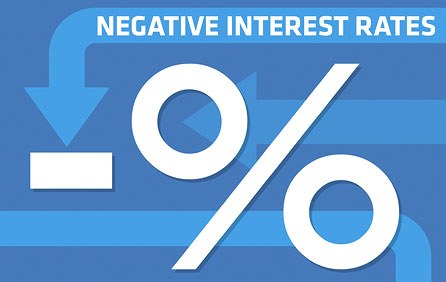
Earlier this month, the European Central Bank (ECB) introduced a series of measures aimed at stimulating euro zone’s beleaguered economy. The measures include: lowering the bench mark interest rate from 0.25% to 0.15%, as well as capping long-term loans (till 2018) to banks at 7%. The ECB also considered quantitative easing but stopped short of its re-introduction. None of these measures are new and all have been tried before in one way or another.
However, what caught the attention of most people was the ECB’s decision to use negative interest rates. The ECB cut its deposit rate for banks from zero to -0.1%, to encourage banks to lend to businesses rather than hold on to money. The decision drew a subdued response as to whether negative interest rates could be effective in turning Europe’s economic fortunes around. Howard Archer, chief UK and European economist at IHS Global Insight said, “Despite being widely anticipated and in some quarters criticised for occurring too late, it is still a bold and unusual move by the ECB to take its deposit rate into negative territory. There has to be considerable uncertainty as to how effective negative deposit rates will turn out to be.”
Ever since the global economic crisis in 2008, the ECB has been continuously reducing interest rates in a bid to discourage the hoarding of cash and to stimulate lending, thereby hoping economic activity would pick up and the economy would grow. For the euro zone economies, this has yet to materialise, and here is the reason why.
In Western economic thinking, the benchmark interest rate is the sole tool used by the central bank to control money supply and boost economic growth. There is also taxation but its impact is negligible in comparison. When the economy is growing too fast, the central bank typically raises the benchmark interest rate to make borrowing more expensive and this in turn contracts money supply. Conversely, when the economy is in recession, the central bank reduces the benchmark interest rate to encourage lending and money supply expands.
But in practice adjusting the benchmark interest rate by the central bank places a huge stress on the banking system, and in the time of crisis many banks become deprived of cash. For banks to operate efficiently and make profits they need depositors. But depositors require incentives to keep their cash in banks. These incentives appear in the form of interest. If the interest paid on deposits is high, the wealthy capitalists take their money out of circulation and deposit their money in the bank. This is usually accompanied by a sell-off of assets and commodities and the price of such items dramatically drops. This means that banks are awash with cash, but are unable to lend because borrowing is expensive.
On the other hand, if the interest paid on the deposits is low the wealthy capitalist take their money out of the bank and invest it somewhere else. Thus the bank is deprived of cash and is again unable to lend, even though the conditions for lending are favourable. Such a banking system not only favours the super-rich but it is at their mercy.
To overcome such situations banks usually undertake two main measures: a) borrow money from the money markets at a low interest rate and then subsequently lend out money at a higher interest rate; the difference in the interest rate equates to the operating profit for the bank b) lend out more money than deposits through a system known as the fractional reserve. Whilst these measures may work in the normal circumstance, in tough economic conditions, the measures fail to work and usually banks are saddled with large amounts of debt with depositors demanding their money back. Governments intervene to reset the banking system—this is what happened in the aftermath of the economic crisis in 2008—but the banking is always prone to the same problems.
In Islam, the money supply is not subject to a benchmark interest rate. On the contrary, the money supply in the Islamic society is based on a certain amount of gold and silver— the gold or bimetallic standard. Hence, the money supply cannot be artificially inflated as what happens via the fractional reserve system in capitalist societies. Consequently, the prices of goods and services are extremely stable.
Furthermore, Islam has stipulated stringent rules to prevent the super-rich from hoarding wealth. The entire focus of the Islamic economic system is to promote the circulation of wealth in society so that economic activity increases and the economy grows. This is unlike capitalist societies where the entire focus is to increase the wealth of the super-rich at the expense of everyone else.
Muslims living in Europe must take it upon themselves to clearly explain the flaws within capitalism and highlight the benefits of the Islamic economics at all levels of society.
Written for the Central Media Office of Hizb ut Tahrir by
Abu Hashim
